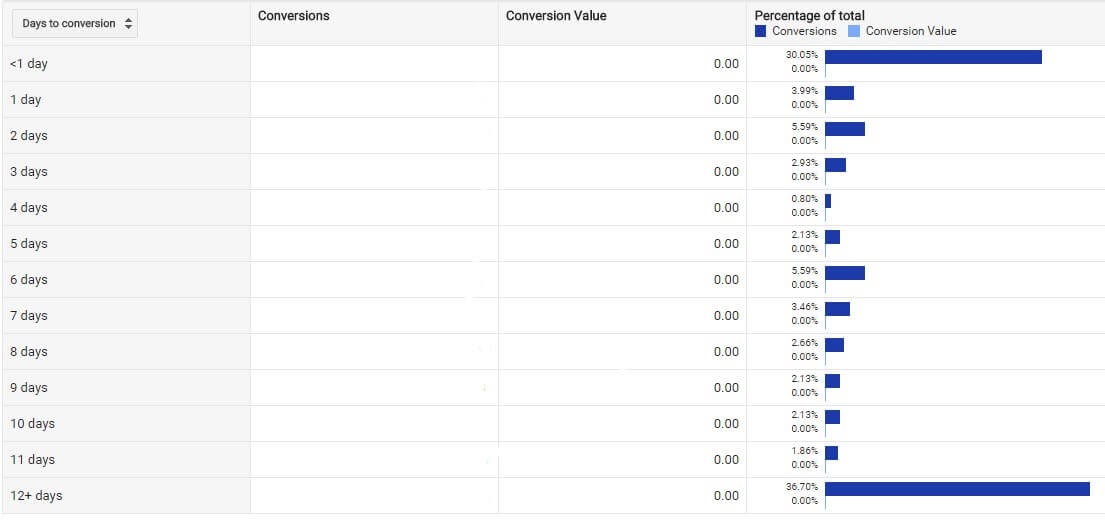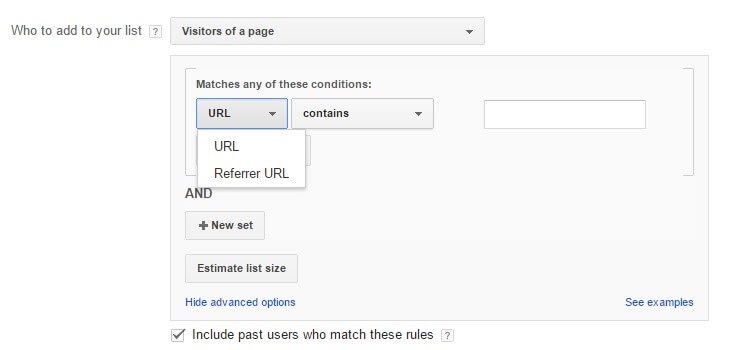Here is a fact about Google AdWords and search engine marketing campaigns in general. If you are not retargeting website visitors and running remarketing ads, you are leaving a lot of money on the table.
Studies reveal that only 2 to 4 percent of website visits result in transactions. The rest of the website visitors require lead nurturing in order to convert.
Retargeting is an extremely important aspect of successful online marketing. Some marketers just don’t test retargeting. On the other hand, others just fail to get any substantial success with their remarketing campaigns.
Our aim is to change that by helping you achieve an unprecedented level of success with your Google AdWords remarketing ads.
In this blog post, we are going to share our top 6 retargeting tips for advanced Google AdWords users.
Let’s begin.
But first, let’s discuss the common types of remarketing goals, so you know what you are going after.
Remarketing goals
Since every business is different, they may have different marketing and remarketing goals. Before you start your remarketing campaign, spend a reasonable amount of time evaluating your retargeting goals and see what you want to achieve from them.
The following are three common types of remarketing goals that most online businesses have every now and then:
- Retargeting those website visitors who visited the website but did not take any action, e.g., didn’t opt in on your landing page.
- Retargeting those website visitors who initiated the checkout process but didn’t purchase or completed the transaction, e.g., abandoned the cart.
- Retargeting who people who didn’t see a particular web page or content piece that you now want to promote, e.g., promoting content.
Based on these retargeting goals, you will have to create your retargeting list.
Now, let’s jump into our top 6 retargeting tips and tricks for Google AdWords
Tip #1: Explore YouTube

YouTube is an excellent platform for running remarketing ads. Surprisingly, not many digital advertisers consider YouTube as a viable option.
However, we highly recommend that you explore YouTube as a potential platform, run a few ads, and compare its results from other remarketing platforms. You are very likely to be surprised by the positive results you get from YouTube.
An important thing to note here is that remarketing is all about creating a visual connection with the reader — to remind them what they saw earlier. YouTube is a video platform which serves this purpose perfectly.
You can show your video “in steam” ahead of other YouTube videos. Moreover, if a user skips your advert before 30 seconds, you don’t pay for the impression. It’s a win-win solution for you.
Tip #2: Don’t forget the time lag report
Go to your Google AdWords account and select Tools > Attribution (search funnels) > Time lag.
There you will find a Time Lag conversion report that will show you exactly how many days it takes after the first click for people to convert. Based on this information, you can determine how long your remarketing lists need to be so you could catch people and encourage them to come back and complete the transaction.
We also recommend that you continue visiting the time lag conversion report after a few weeks of your retargeting campaigns and see if you’re able to speed up the purchase process.
Tip #3: Bid adjustment for warmer traffic
There are two types of potential leads: cold leads and warm leads.
Warm leads are the ones that have recently visited your website. The tip is to identify those who recently visited your site but didn’t complete the action, adjust your bid accordingly, and spend more on those warm leads.
Experiment with increasing your ad spend and decreasing the frequency capping to directly affect the conversion rate on your landing pages.
Tip #4: Bid adjustment for colder traffic
This is the exact opposite of what we discussed in the previous point. But it is equally important, so it deserves a separate discussion.
You have to identify the people who are still in the “awareness” phase. Those website visitors are not sure about your website, product, or service. They are just checking you out by visiting your homepage or a few “informative” web pages on your site.
Take note of all those people. They are not ready to buy yet.
Unless they are ready to buy, it would be wise to adjust your bid accordingly and spend less amount on them.
Instead of pushing them directly to a landing page — which would most likely result in a very low conversion rate — gradually move them through the sales funnel. Try offering a free ebook to them and converting them into a lead to which you can send “lead nurturing emails” via email marketing campaigns.
By adjusting your ad spend proportionally and strategically, you can be a lot more successful with your retargeting campaigns.
Tip #5: Be aware of ad fatigue
While remarketing turns out to be very effective, it is still important to be aware of ad fatigue.
It is possible that you are running a remarketing ad campaign for 30 days and people start getting bored of your ad copy or image. Instead of wasting valuable money on ad spend with high impressions and nothing else, try tweaking your ad copy that is more engaging, relevant, and timely.
Offer a limited-time discount, highlight the urgency, change the message, etc.
Tip #6: Set up Referral URL remarketing lists
Do you know that you can create a list of people who come in from a certain source? For example, Facebook or Twitter or a specific third-party website.
When you are creating a new remarketing list, click on the drop-down menu, and you will see an option of “Referral URL.”
The tip is to tie user journey together in order to create consistent messaging which is more likely to result in a higher conversion rate.
For instance, if you can keep track of the people who visited your website because of a specific promotion that you have been running on Facebook, you can use that to tweak further marketing messages accordingly.
The same concept can be applied to traffic you receive via email marketing campaigns.
By simply tagging your URL with “source=email”, you can identify and keep track of that audience list.
You can even go as granular as identifying the specific email that sent you the traffic, so you can follow up on that story and formulate the rest of your remarketing strategy accordingly.
Conclusion
All these tips are valuable in significantly increasing the effectiveness of your retargeting campaigns. However, a lot depends on testing these different tactics.
Make sure that you are experimenting with different techniques, evaluating the ones that are working, and then spending more on them accordingly. That’s the best way to ensure long-term success with Google AdWords marketing and remarketing campaigns.
